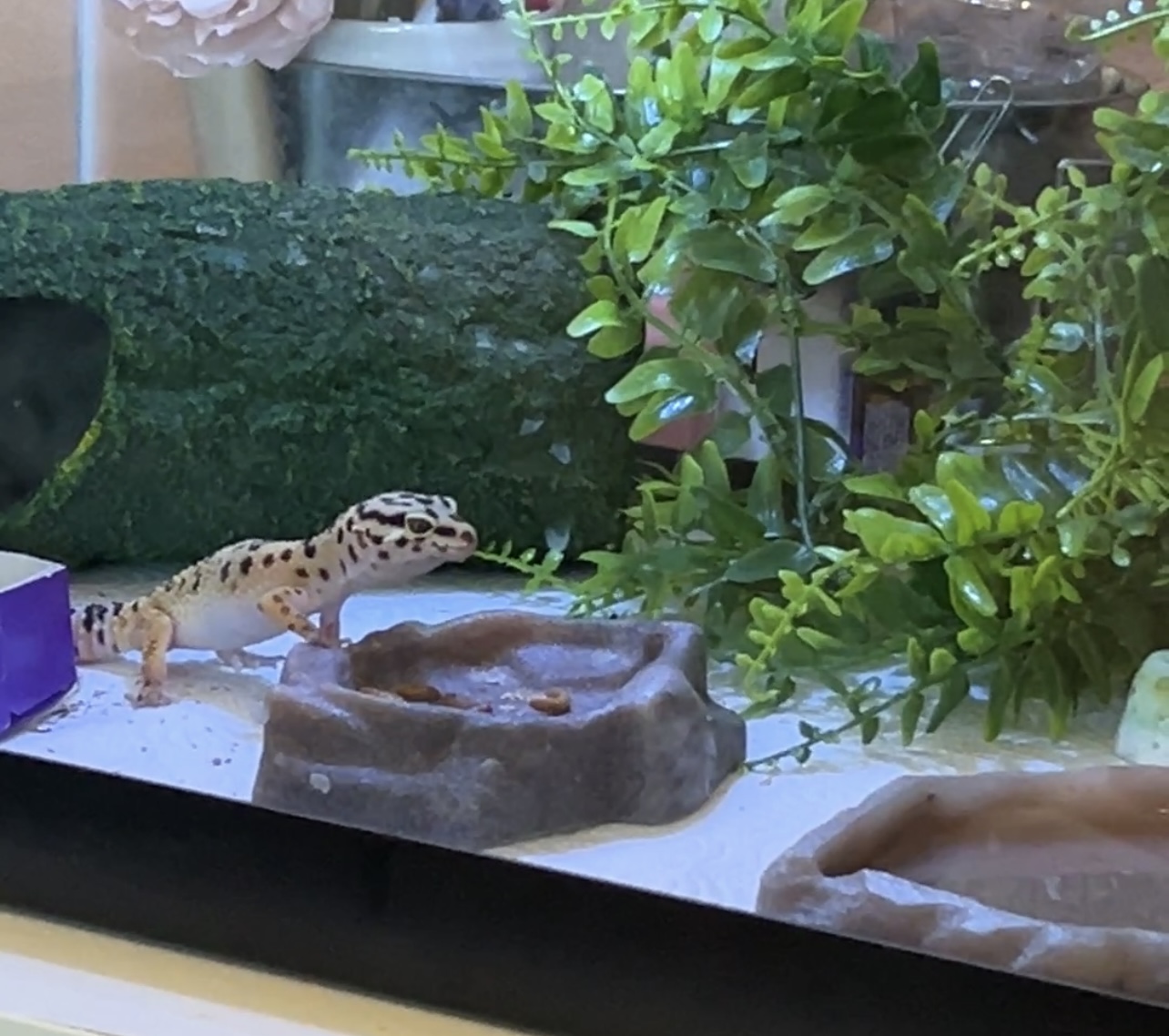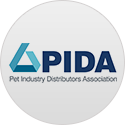At Pets in the Classroom, we know that choosing the right classroom pet means finding one that is both easy to care for and engaging for students—and leopard geckos check both boxes. These insectivorous reptiles not only have manageable care requirements but also offer unique learning opportunities for students, especially during feeding time. Watching a leopard gecko hunt and eat provides a hands-on way for kids to learn about nutrition, responsibility, and animal behavior. In this guide, we’ll walk you through what leopard geckos eat in captivity, how often they should be fed, and important tips for keeping them healthy—whether you’re caring for one at home or in a classroom setting.
Types of Food for Leopard Geckos
Leopard geckos primarily consume live insects, but there are various types of insects and other food sources that can be provided to them in captivity:
Crickets
- Nutritional Value: Crickets are one of the most common food items for leopard geckos. They provide good protein and are relatively easy to find.
- Feeding Tips: Crickets should be gut-loaded (fed nutritious food) before being offered to the gecko. This ensures that the gecko gets the nutrients it needs from the crickets.
- Size Considerations: The size of the crickets should be appropriate for the size of the gecko, typically no larger than the width of the gecko’s head to avoid choking hazards.
Mealworms
- Nutritional Value: Mealworms are another staple food source. They are high in fat, so they should be offered in moderation to prevent obesity.
- Feeding Tips: Like crickets, mealworms should also be gut-loaded with nutritious food to improve their nutritional value before feeding them to the gecko.
- Variety: While mealworms are a good option, they shouldn’t be the only insect in the gecko’s diet due to their fat content.
Dubia Roaches
- Nutritional Value: Dubia roaches are a nutritious alternative to crickets and mealworms. They are rich in protein and low in fat, which makes them ideal for leopard geckos.
- Feeding Tips: Like crickets and mealworms, Dubia roaches should be gut-loaded before feeding to ensure they are nutritionally balanced.
- Size Considerations: Dubia roaches are available in various sizes, so it’s important to choose appropriately sized ones for your gecko.
Waxworms
- Nutritional Value: Waxworms are high in fat and can be used as a treat rather than a regular part of the diet. They are especially appealing to geckos due to their fatty content, but they should be fed sparingly to avoid weight gain.
- Feeding Tips: Waxworms can be offered occasionally for variety or to entice a gecko that is being picky about food. They should not be a primary food source.
Superworms
- Nutritional Value: Superworms are larger than mealworms and are high in protein and fat. Like mealworms, they should be fed in moderation to prevent excessive fat intake.
- Feeding Tips: Superworms should be gut-loaded and dusted with calcium powder before feeding. Due to their size, they should be fed to larger geckos.
Silkworms and Hornworms
- Nutritional Value: Both silkworms and hornworms are excellent sources of protein, low in fat, and rich in moisture, making them very hydrating for geckos. These insects are great for maintaining a well-rounded diet.
- Feeding Tips: These can be a great occasional addition to their diet but may be harder to find than crickets or mealworms.
Supplements for Leopard Geckos
While insects are a key part of a leopard gecko’s diet, providing appropriate supplements is crucial to ensure they get all the essential vitamins and minerals they need, especially calcium and vitamin D3.
Calcium
- Importance: Calcium is vital for bone health and preventing metabolic bone disease (MBD), a common health issue in reptiles that lack sufficient calcium.
- How to Feed: Dust insects with calcium powder before feeding. This helps ensure the gecko receives enough calcium, especially since leopard geckos do not receive enough from their diet alone.
- Calcium Without Vitamin D3: Generally, calcium powder without vitamin D3 should be used most of the time, as they can absorb vitamin D3 from UVB light (though they do not need it as much as other reptiles).
Vitamin D3
- Importance: Vitamin D3 helps leopard geckos absorb calcium properly. If the gecko is not getting UVB light, vitamin D3 supplementation is essential to prevent deficiencies.
- How to Feed: Vitamin D3 should be dusted on insects once or twice a week, depending on the amount of UVB exposure the gecko gets. Over-supplementing vitamin D3 can be harmful, so it should be used sparingly.
Multivitamin Supplements
- Importance: Multivitamins provide other essential nutrients, such as vitamin A and B vitamins, that may not be adequately supplied by insects alone.
- How to Feed: A multivitamin supplement should be dusted on insects once or twice a week to ensure the gecko gets a balanced range of nutrients.
How Often to Feed Leopard Geckos
The frequency of feeding depends on the age and size of the leopard gecko:
- Juveniles (up to 12 months old): They have faster metabolisms and need to eat more often. Typically, they should be fed daily, with a variety of insects.
- Adults (12 months and older): Adult geckos eat less frequently and can be fed every other day or 3 times a week, depending on their size and activity level.
Hydration
While leopard geckos primarily get their hydration from the food they eat, it is still essential to provide fresh water at all times. Place a shallow water dish in the gecko’s enclosure and change the water regularly to ensure it remains clean. Insects like hornworms and silkworms can provide some additional moisture.
What to Avoid Feeding Leopard Geckos
There are several foods you should never feed leopard geckos:
- Insects from the wild: Wild-caught insects may carry pesticides or parasites that could harm your gecko.
- Fireflies: These contain toxins that can be deadly to reptiles.
- Insects larger than the width of their head: Larger insects pose a choking hazard or can injure the gecko.
- Fruits and vegetables: Leopard geckos are strictly insectivores, and while some reptiles eat plant material, leopard geckos cannot properly digest fruits and vegetables.
For more information on leopard geckos and why they make great classroom pets, visit our blog post, Leopard Geckos – The Perfect Classroom Pet.




